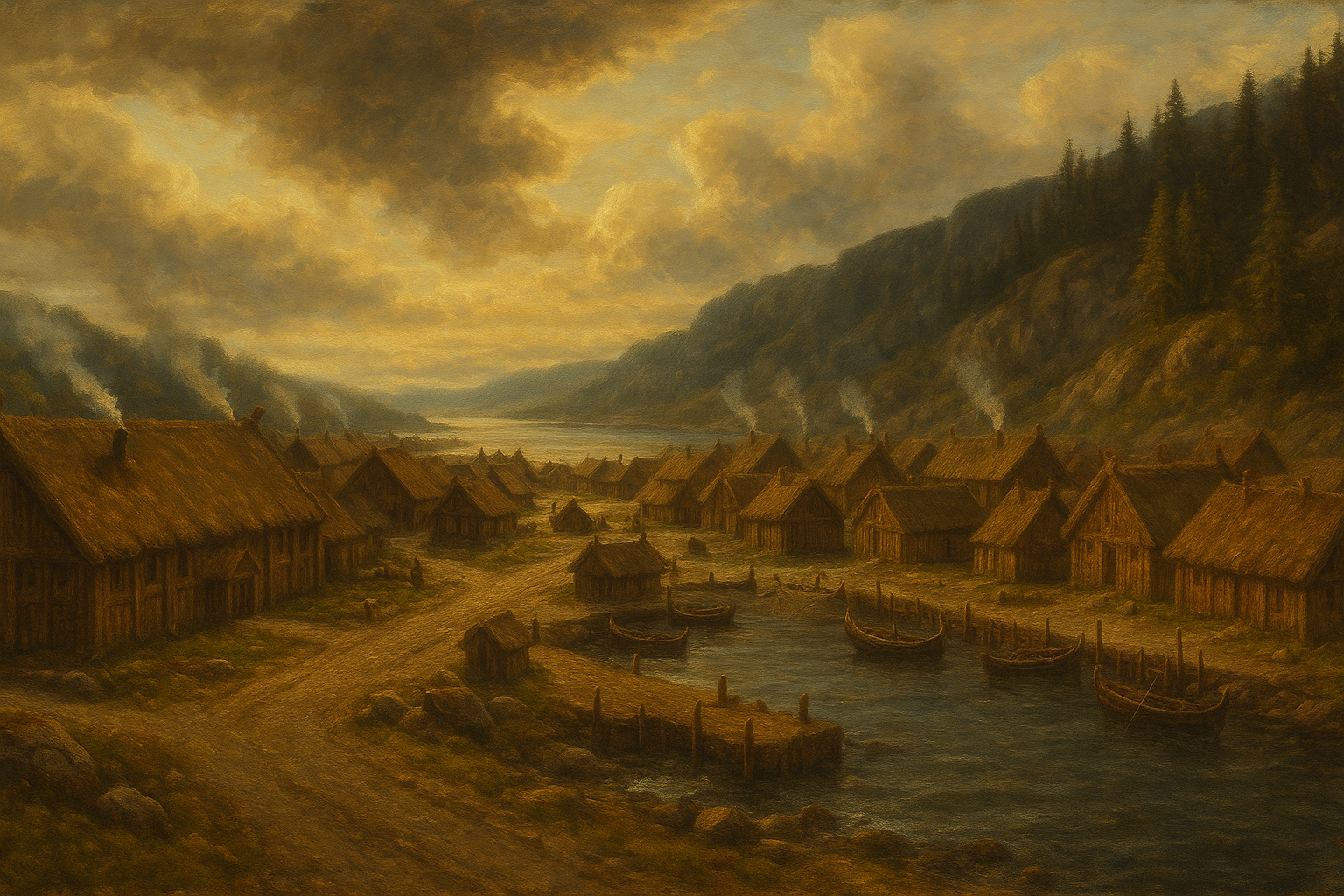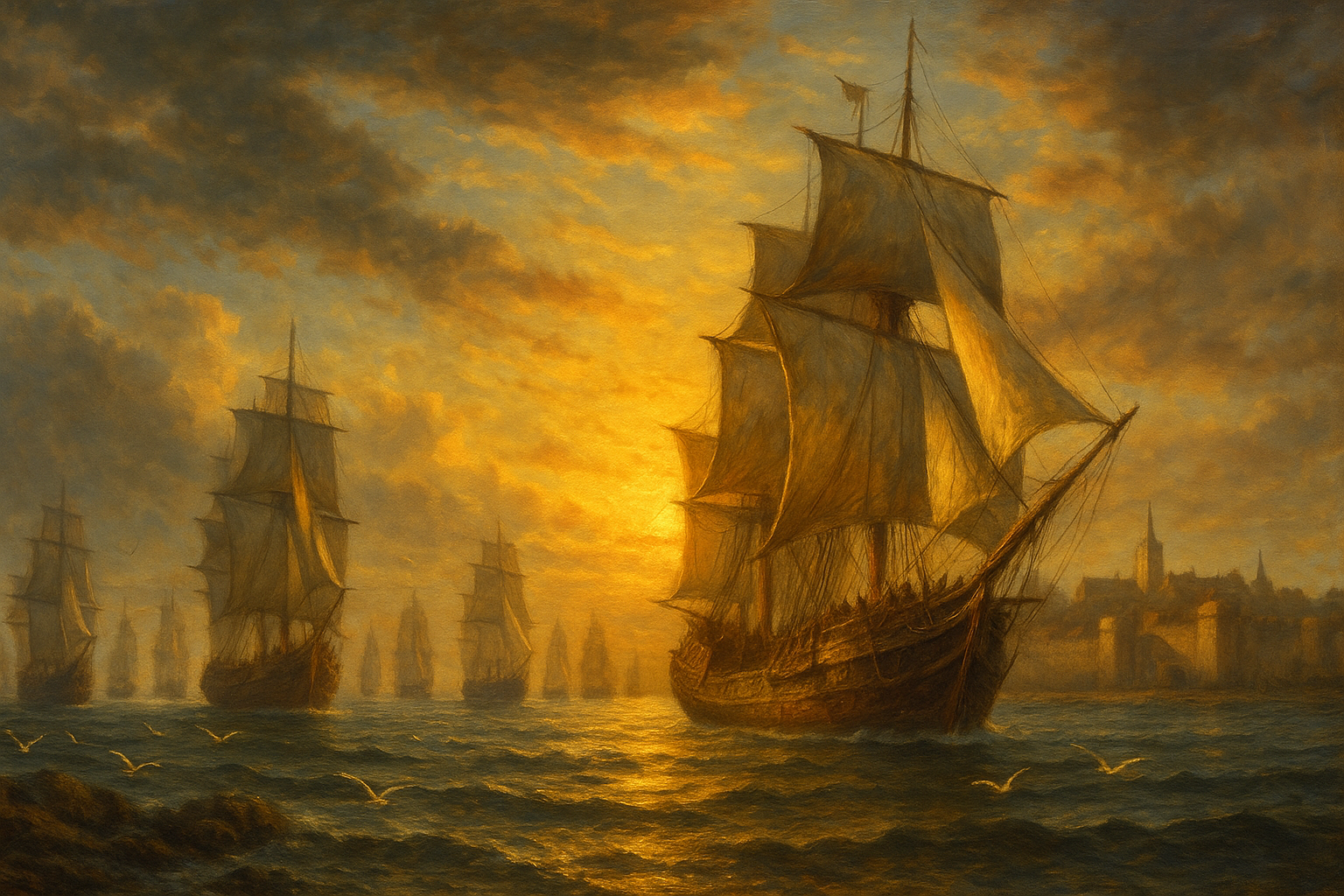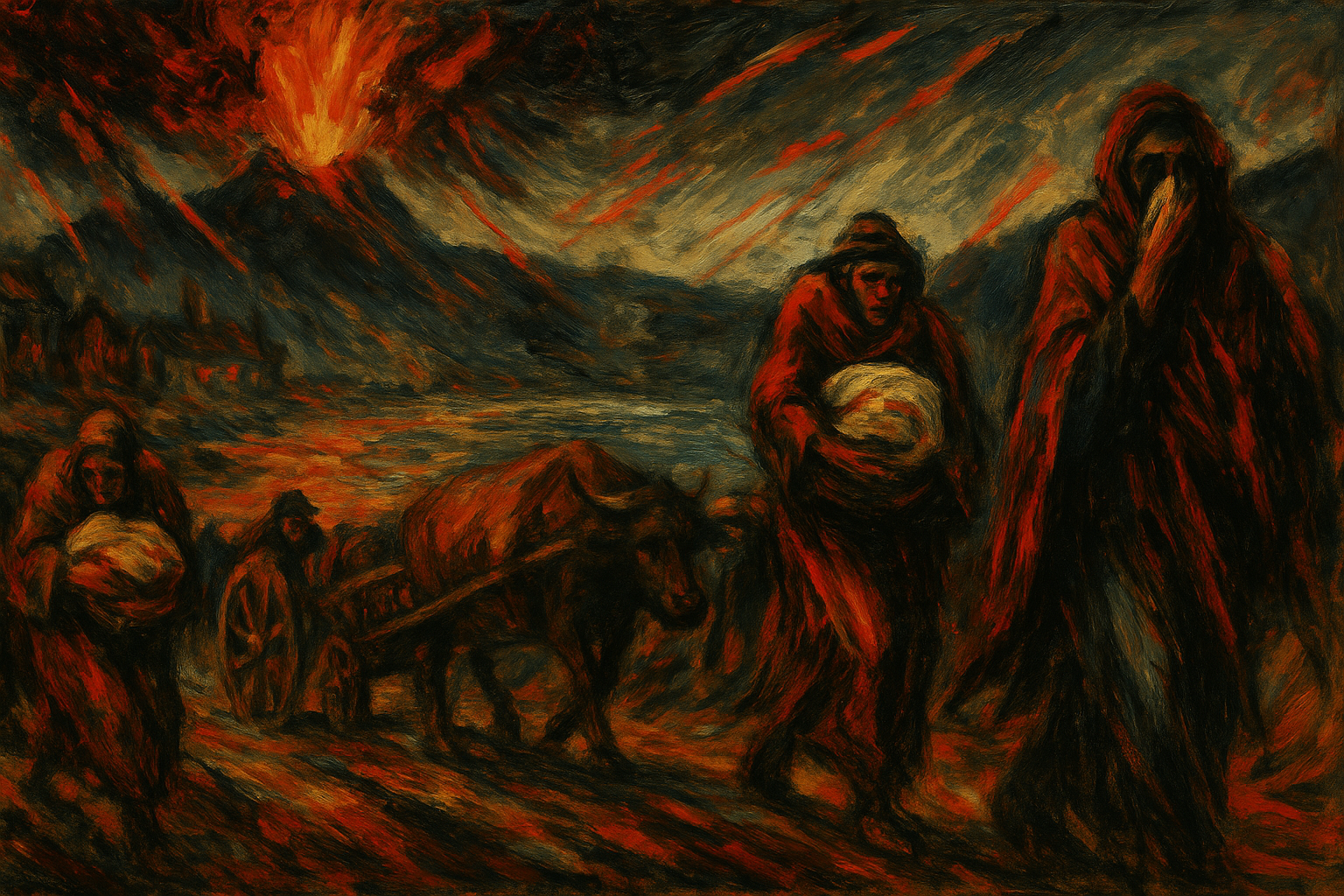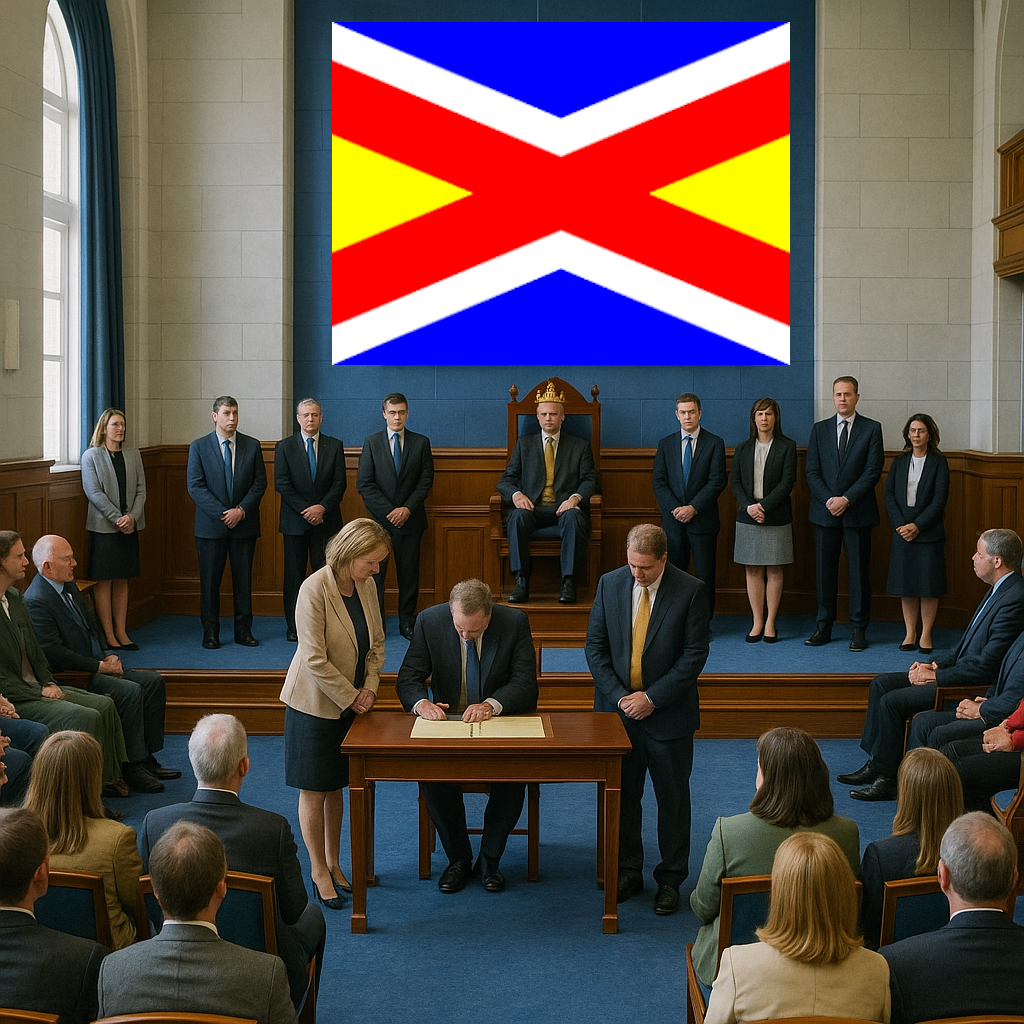Welcome to the history page of the Dominion of Svarthaedir. Here you'll explore the rich tapestry of our nation's past, from its early settlers to its rise as a leading nation in Vexillium. Discover the events and figures that have shaped our history.
From Eriksson's Discovery to Modern Dominion: The Svarthaedir Story
Early Settlement and the Svartic Dawn (800–521 BP)
Human history in Svarthaedir begins with the landfall of Alf-Björn Eriksson in 800 BP, which opened the way for Cabotenian and Stervian settlers. Over the next century, fishing villages and farms spread along the coasts, though political life was fractured among rival lords and kin-groups. The Treaty of Snaeffellstadir (c.650 BP) marked the first step toward unity, and the parliament convened at Reykvellir in 630 BP introduced practices of lawmaking and debate that became the foundation of national politics.

Key Turning Points
- 800 BP – First landfall by Alf-Björn Eriksson
- c.650 BP – Treaty of Snaeffellstadir signed
- 630 BP – First parliament meets at Reykvellir
The Maritime Reach (521–115 BP)
With unity achieved, Svarthaedir turned to the sea. Its ports became shipbuilding and trading centres, supporting voyages across the Melanian Channel and beyond. Crews established trading posts and fortified waystations that carried salted fish, whale oil, and herrings outward, and brought back textiles, metalwork, and navigational instruments. Religion travelled with commerce: Cruisan chapels rose along distant coasts, offering sanctuary and shaping a social ethos of care and hospitality. By the late 280s BP, however, declining fish stocks warned of environmental limits to expansion, even as maritime life remained central to Svartic identity.

Key Turning Points
- 521 BP – Emergence of unified maritime economy
- 400–300 BP – Expansion of trading posts and Cruisan chapels
- 280s BP – First reports of overfishing and ecological strain
The Age of Shadows (115 BP–218 AP)
Disaster followed prosperity. Waves of plague reduced populations drastically, while the great eruption of 223 BP devastated entire regions and forced mass relocations. Many rural hamlets disappeared, and survivors concentrated in fortified towns. The strain fostered new traditions of mutual aid and remembrance, embedding resilience in both culture and politics. Though trade adapted, the long centuries of loss left deep scars and defined a sombre but formative period in Svartic memory.

Key Turning Points
- 223 BP – Catastrophic volcanic eruption, 50,000 evacuated
- Repeated plague outbreaks reshape society
- Growth of communal resilience and mourning traditions
Independence and the Republic (218–317 AP)
The third century AP brought political renewal. From 218 AP, Svarthaedir—briefly styled Islandia—exercised self-rule, and by 257 AP declared full independence as a kingdom. State-building followed: codified laws, stronger maritime administration, and modernised ports. In 297 AP, republican reforms created the Crowned Republic of Islandia, preserving a ceremonial monarchy while empowering elected institutions. Territorial expansion in 299 AP added Holmey, Kvoldey, Skerey, and Sykurey, transforming fisheries and cementing maritime supremacy. Though the republican phase was short-lived, it left a legacy of prosperity, reform, and national confidence that shaped the modern Svarthaedir.

Key Turning Points
- 218 AP – Self-governance granted
- 257 AP – Independence proclaimed
- 297 AP – Creation of the Crowned Republic
- 299 AP – Annexation of Holmey, Kvoldey, Skerey, and Sykurey